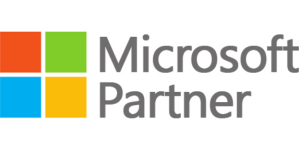
In the world of IT infrastructure, the end-of-life (EOL) for hardware or software components is an inevitable reality that businesses must navigate. When it comes to Microsoft Server, the EOL can be a significant challenge, especially if it requires costly hardware upgrades, licensing fees, and ongoing maintenance. Fortunately, Microsoft 365 cloud services offer an alternative solution that allows businesses to transition smoothly without the need for substantial capital expenditure. Here’s how:
1. Subscription-based Model
Microsoft 365 operates on a subscription-based model, which means you pay a predictable monthly or annual fee per user or device. This eliminates the need for upfront capital expenses associated with purchasing new servers, hardware upgrades, and software licenses. Businesses can allocate their budgets more efficiently without the burden of significant upfront costs.
2. Scalability and Flexibility
With Microsoft 365, you can scale your services up or down according to your business needs. As your organization grows or evolves, you can easily add or remove users and services without the capital-intensive process of acquiring new hardware or software licenses. This scalability provides cost control and flexibility that traditional server setups often lack.
3. Maintenance and Updates
One of the hidden costs of on-premises servers is the ongoing maintenance, management, and updates required to keep the system secure and efficient. Microsoft 365 cloud services shift the responsibility of server maintenance and updates to Microsoft, reducing the need for in-house IT staff and associated costs. This frees up valuable resources that can be invested in strategic business initiatives.
4. Data Security and Compliance
Microsoft invests heavily in data security and compliance measures to protect your data in the cloud. This often exceeds the security capabilities of individual businesses. By migrating to Microsoft 365, you benefit from these robust security features without the need for significant capital investments in cybersecurity infrastructure.
5. Business Continuity
Cloud-based services, including Microsoft 365, offer built-in disaster recovery and business continuity features. Your data is securely stored in redundant data centers, reducing the risk of data loss due to hardware failures or disasters. This eliminates the need for costly backup solutions and disaster recovery infrastructure.
6. Access Anywhere, Anytime
Microsoft 365 enables your team to work from anywhere with an internet connection. This flexibility reduces the need for physical office space and associated capital expenses. It also supports the growing trend of remote and hybrid work arrangements, enabling your business to adapt to changing workforce dynamics.
7. Collaboration and Productivity Tools
In addition to core email and document storage, Microsoft 365 offers a suite of collaboration and productivity tools, such as Microsoft Teams and SharePoint. These tools enhance team communication and collaboration, potentially leading to increased efficiency and reduced operational costs.
Conclusion
Microsoft 365 cloud services provide a compelling alternative to on-premises Microsoft Server solutions, particularly when facing the end-of-life scenario. By adopting a subscription-based, cloud-first approach, businesses can eliminate the need for significant capital expenditure on hardware, software licenses, and ongoing maintenance. This not only reduces upfront costs but also offers scalability, flexibility, and enhanced security, allowing businesses to focus on growth and innovation rather than infrastructure management. In an ever-evolving digital landscape, embracing cloud services like Microsoft 365 can be a cost-effective and strategic decision for businesses of all sizes.
